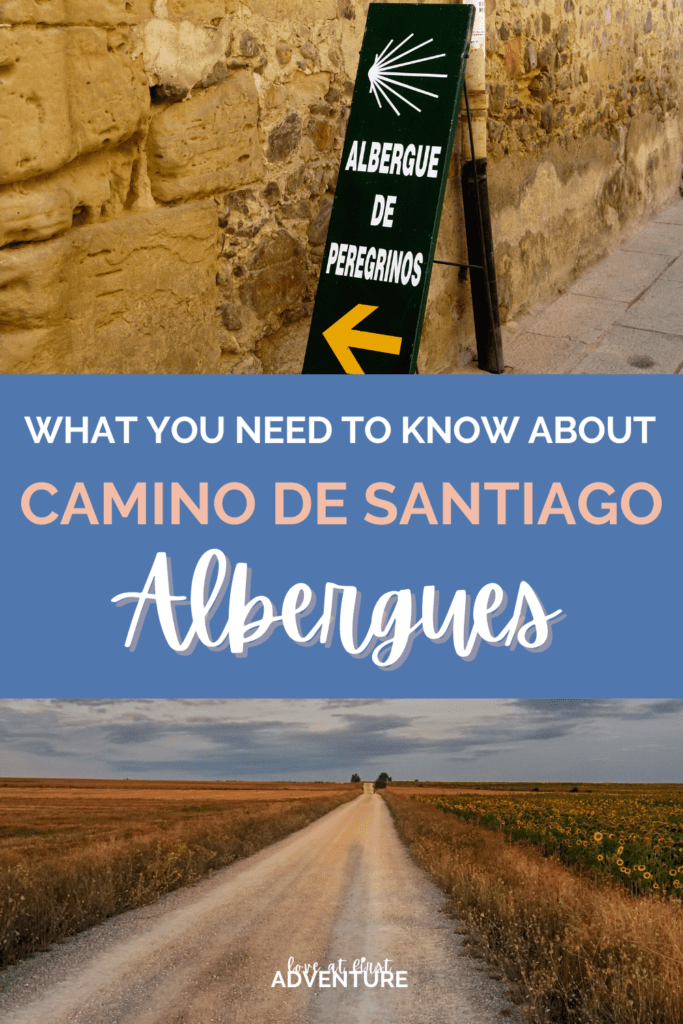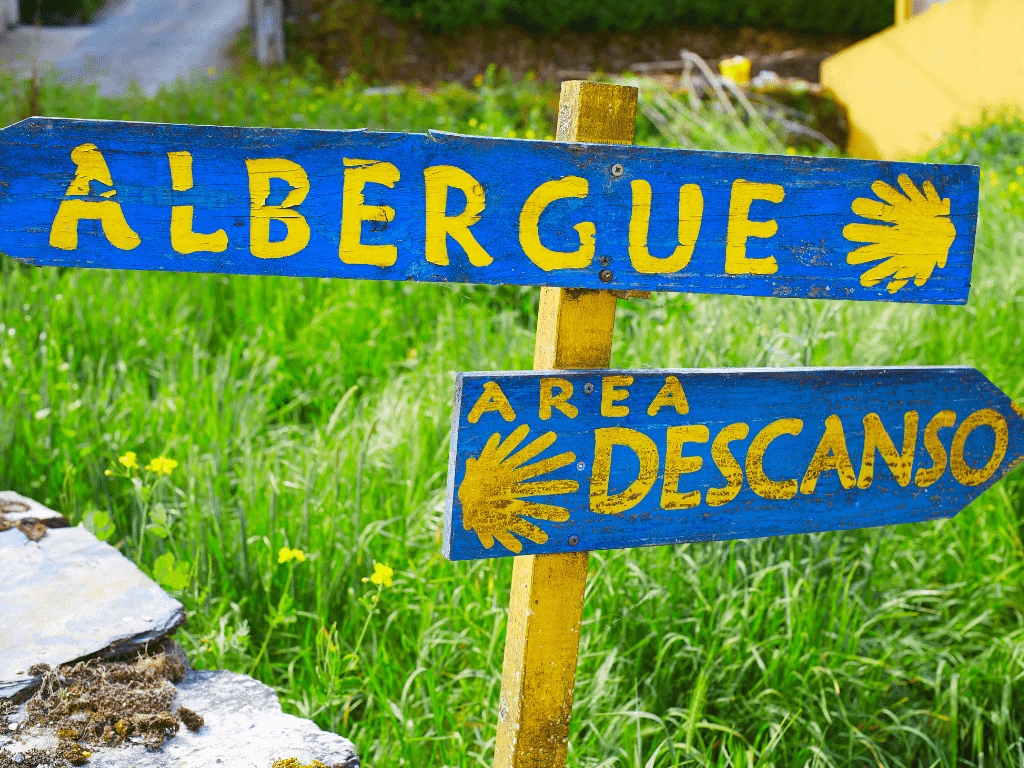Complete Guide to Albergues on the Camino de Santiago
Disclaimer: This article may contain affiliate links. For full information, please see our disclaimer here.
I love Camino de Santiago albergues! Albergues may be inexpensive pilgrim’s hostels along the Camino de Santiago pilgrimage trail—but they’re so much more than that.
Albergues are an essential part of how pilgrims travel along the Camino de Santiago (Way of St. James) and are often one of the most memorable things about the trek.
Not only do they provide nightly refuge, they also are places to connect with interesting people from around the world who are also walking the Camino.
Because albergues (sometime called refugios) operate unlike other hostels, it’s important to know what to expect when trying to find and book accommodation on the Camino de Santiago.
In this complete guide to Camino de Santiago albergues, we’re talking all about albergues to help you prepare for your upcoming pilgrimage. We’ll also review the other types of accommodation you’ll find along the Camino de Santiago routes.
Everything You Need to Know About Camino de Santiago Albergues
In our guide to albergues, we’re answering everything you need to know about Camino de Santiago albergues — what they are, how to book, what you need to stay in them, are they safe — and much much more.
What is an albergue?
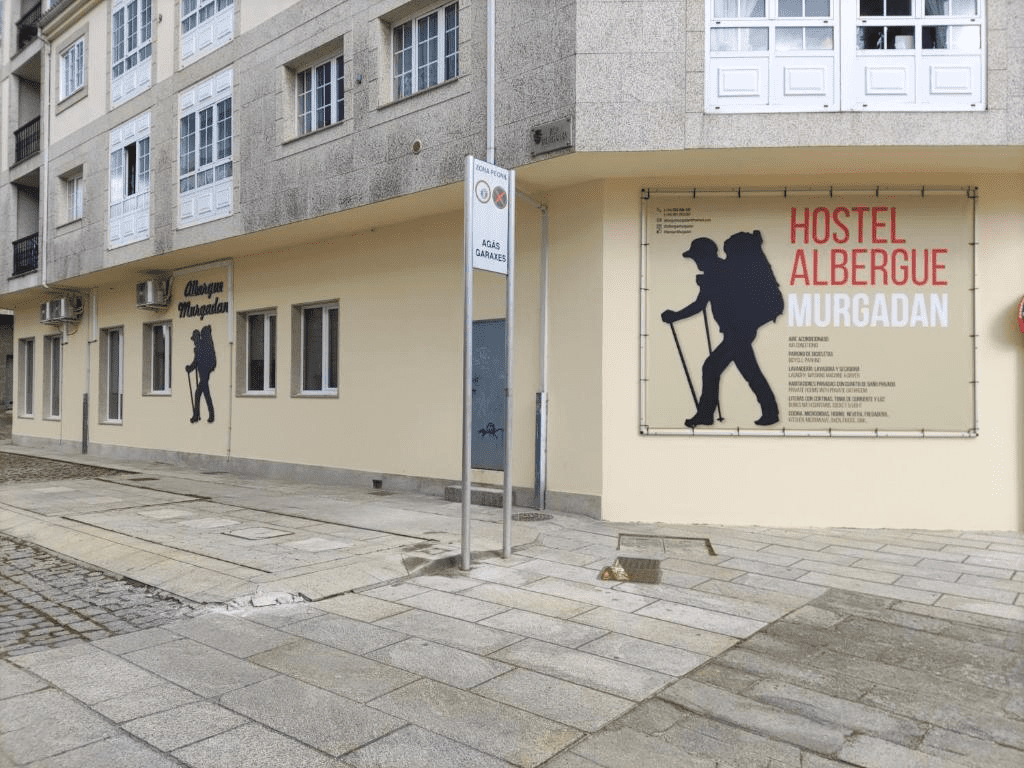
Simply stated, an albergue is a hostel that caters directly to pilgrims walking the Camino de Santiago pilgrimage.
Like other hostels, they are budget-friendly, offer a bed in a dormitory, and often have a shared lounge, kitchen facilities, and other pilgrim-focused amenities (which we’ll get into, below).
Quite literally meaning refuge — which they truly are — you may also see the words refugio or gite in addition to albergue, depending on which route you take.
Types of Albergues
To someone who has never been on the Camino, all hostels are the same. But, that’s not the case when it comes to accommodation along the Camino. First off, there are several different types of albergues. In basic terms, ther are two main types of albergues: not-for-profit and private.
Not-for-profit Albergues
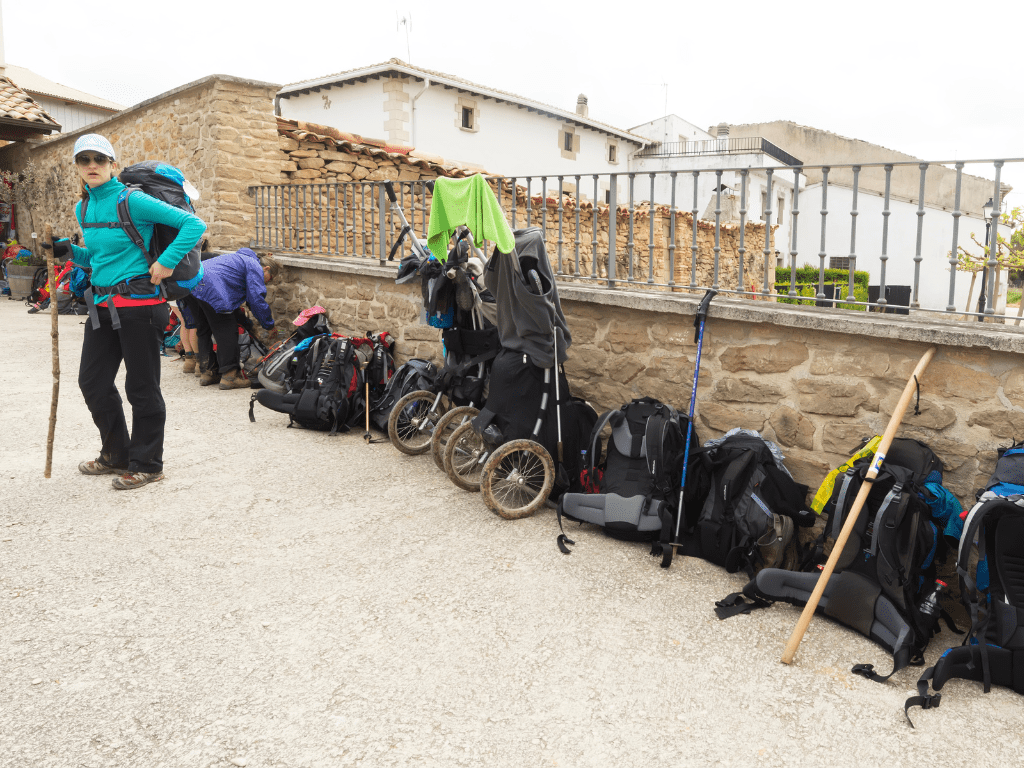
Public or other not-for-profit albergues consist of:
- Municipal/public albergues
- Parochial albergues
- Association albergues
- Donativos
These are all low cost, volunteer-run, and some are subsidized by the government (public or municipal). Since they are typically volunteer-run, whoever is running them can save on overhead costs and keep the Camino affordable for all. Surprisingly, some albergues are even donativos. Donativos are donation-based or pay-as-you-are-able accommodations. The minimum suggested donation, however, is around €5. It’s customary that you pay at least that amount.
Public or municipal albergues are typically the cheapest albergues and have the most beds per room. Read more about the cost of albergues here.
They also tend to have a stricter set of rules than private albergues. Let’s review some of the rules public albergues set.
First off, they are exclusive to pilgrims walking the Camino. Thus, you must arrive on foot and present a pilgrim’s passport to stay there. Because of these rules, we have heard of people that have been refused refuge on their first night before starting the Camino — although we had no issue when we started in Astorga.
Next, they are typically first-come, first-serve, meaning they cannot be booked in advance. However, some of them take bookings until the hostel is half full, reserving the rest of the beds for walk-ins.
You can only stay one night at public albergues to make room for more pilgrims. If you would like to spend two nights somewhere for a rest day, you may want to choose a private albergue or hotel.
There is a strict light’s out policy, and the entrance doors are locked in the evening, so you cannot arrive after-hours.
They also don’t always allow luggage transfer services to drop off bags to them.
Please note that these rules do not apply to all albergues. If you plan to stay in public albergues, you’ll want to pay special attention to these requirements.
Private Albergues
Private hostel bunks at Albergue Casa de los Hidalgos in Hospital de Órbigo, Spain
There are also private albergues. These are run by any other business owner along the Camino and tend to be slightly more expensive, but with perks such as less beds per room! You can usually book these in advance through a platform like Booking.com (or by calling, etc. as mentioned above). They often have amenities like restaurants or cafes instead of or in addition to communal kitchens.
Some of the private albergues also offer private rooms or rooms with just a few beds that you could split between yourself and a new pilgrim friend.
When it comes down to it, you really just need a place to rest your head for the night. Don’t worry about knowing all the differences in the types of albergues. Just find accommodation where you feel comfortable.
Typical Camino Albergue Facilities
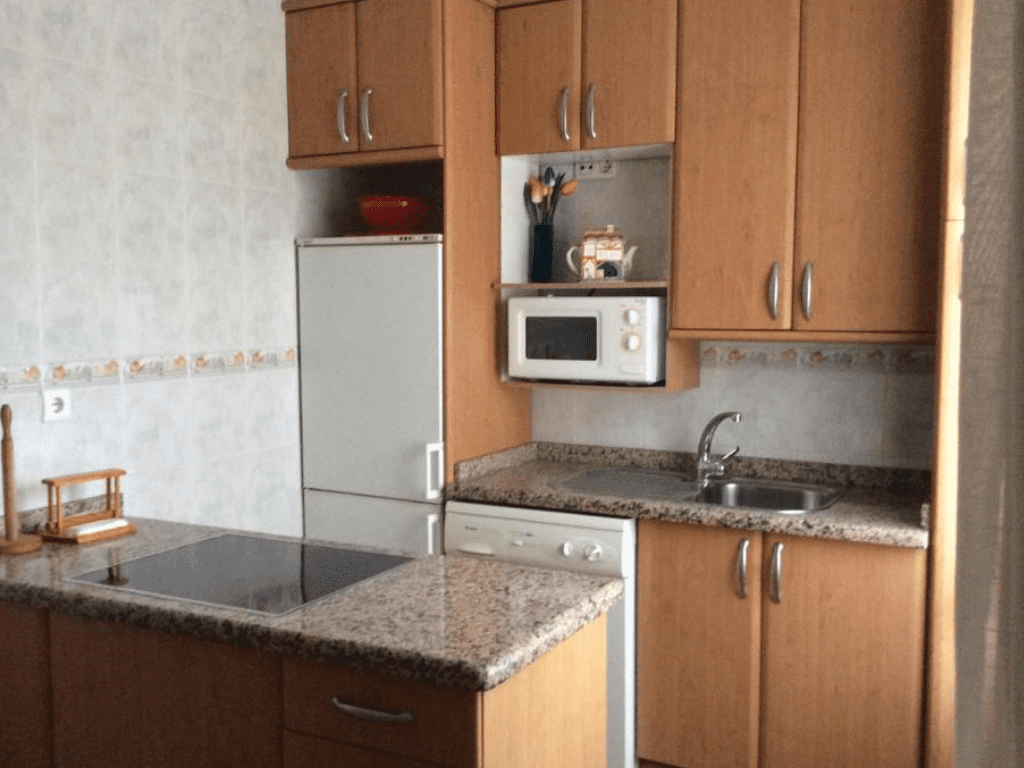
When it comes to facilities and amenities, this is where albergues differ from common hostels. They have just about everything you need for a one-night stay along the Camino:
- Dormitory — beds in a dormitory, as few as 2-4 and as large as 70+
- Showers — separated by gender or ensuite
- Communal kitchen — more common in the not-for-profit albergues
- Restaurant — private albergues (as well as accommodation types) sometimes have a restaurant or cafe attached
- Laundry — a basin to handwash clothes and line dry at minimum
- Wifi — signal strength varies
In your guidebook, you will be able to see what amenities each albergue offers. They typically have little symbols next to them. This is incredibly helpful in deciding where to stay each night. For example, you need an albergue with a washing machine and dryer rather than a hand wash station since it’s raining. Thus, you look in your guidebook and find an albergue with a dryer, and voilà: clean and dry clothes!
Pilgrim’s Tip: Find at least one albergue that serves a communal meal. Intentionally breaking bread with others is one of the most memorable experiences you’ll find along the Camino de Santiago.
How much does Camino lodging cost?
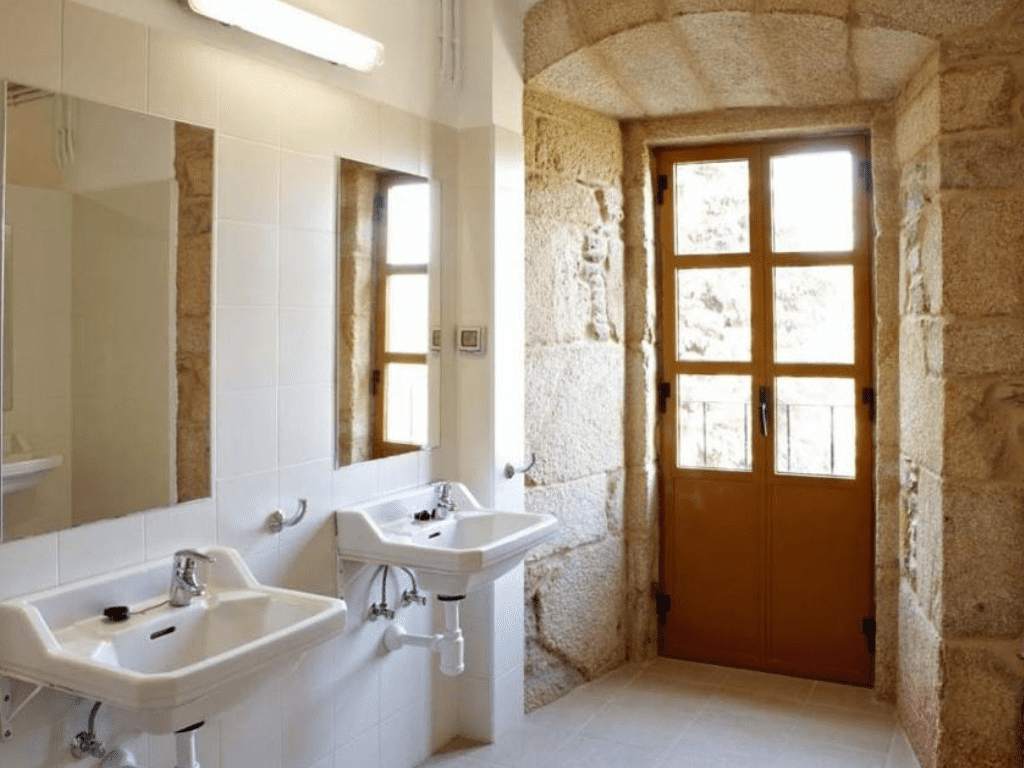
Depending on where you stay, Camino accommodation can range from 5€ per night at a donativo or municipal to 50€/night (or more) at a hotel. There really is something for every budget and preference.
Learn more about how much each type of albergue costs in our full guide to costs on the Camino.
What do you need to stay at albergues?

In our post on packing for the Camino, we detail everything you need to bring for the Camino. This includes what you need for staying in albergues. That being said, let’s go over a few essentials for staying in albergues.
Pilgrim Passport — In order to stay at albergues, you’ll need to show your pilgrim’s passport or credencial in Spanish.
Sleeping bag liner — Most albergues do not have sheets, so you’ll need to bring your own. A sleep sack is lightweight and will work well for most types of weather during the Camino season.
Sarong or turkish towel — A lightweight sarong or turkish towel is a multifunctional item that might just be worth the weight. For women, use it as a towel, a dress, a lightweight blanket, or to hang on your bunk for privacy. A microfiber towel is an alternative choice, but less versatile.
Shower shoes — Bring a pair of flip flops to wear in the showers at albergues.
Ear plugs and a sleep mask — Without a doubt, you’ll want to bring ear plugs! Since there are bound to be a few snorers in the room, it’s best to be prepared with a few pairs so you can get a good night’s sleep. An eye mask will also block any light and help you to get a good night’s sleep.
Pros and Cons of Staying at Albergues

While we think the positives outweigh the negatives when it comes to staying in pilgrim’s hostels along the Camino, there are a few things you should be aware of. So, let’s take a look at the pros and cons of staying in albergues.
Pros of Camino Albergues
- Affordable — Albergues cost between €5 and €15 (sometimes up to 20 on the Camino del Norte)
- Communal — Albergues are part of the Camino experience as they are a place to bond with other pilgrims, the only other people who know exactly what you’re going through
- Well-equipped — Albergues have everything you need for a night’s stop
Cons of Staying in Albergues
- Dormitory — Some albergues, the public ones in particular, have a lot of beds in one room, which doesn’t give you a lot of privacy and can be noisy (again, bring ear plugs!)
- Booking — You can’t book municipal albergues and some other not-for-profit accommodations ahead of time
Theft — While relatively safe, things go missing from time to time. We’ve seen this most reported on the Camino del Norte and in some of the bigger cities on the Camino Frances (e.g. Burgos, Leon).
How to Find & Book an Albergue

The first way to find an albergue is to simply show up! Most of the time, accommodation is located right along the pilgrim route. Oftentimes, you’ll see arrows and signs pointing to them.
However, we think a lot of you might like to be more prepared. So, here are some tips on how to find and book albergues.
Most importantly, we recommend that you purchase a Camino de Santiago guidebook. (See our guidebook recs, here). In your trusty guidebook, you’ll be able to find a list of available albergues, cost, and amenities in each stage.
You can also supplement your guidebook with an app. We appreciate the fact that most of the apps are up-to-date and some even have reviews. We always checked the recent reviews before booking to see if there were any concerns — broken air conditioning, bed bugs, noise, etc.
We think there is no possible way you can know exactly where you’ll end up each night. Therefore, we do not recommend booking ahead of time. Rather, book 1-2 days in advance as you plan your daily stages.
When it comes to booking, we recommend you use Booking.com.
However, you can also call and reserve via phone or email. Some of them also use WhatsApp.Remember, in most cases you cannot reserve space at a public albergue. If you’d like to stay in those, just follow your guidebook and the signs to their front door.
Other Places to Stay on the Camino de Santiago
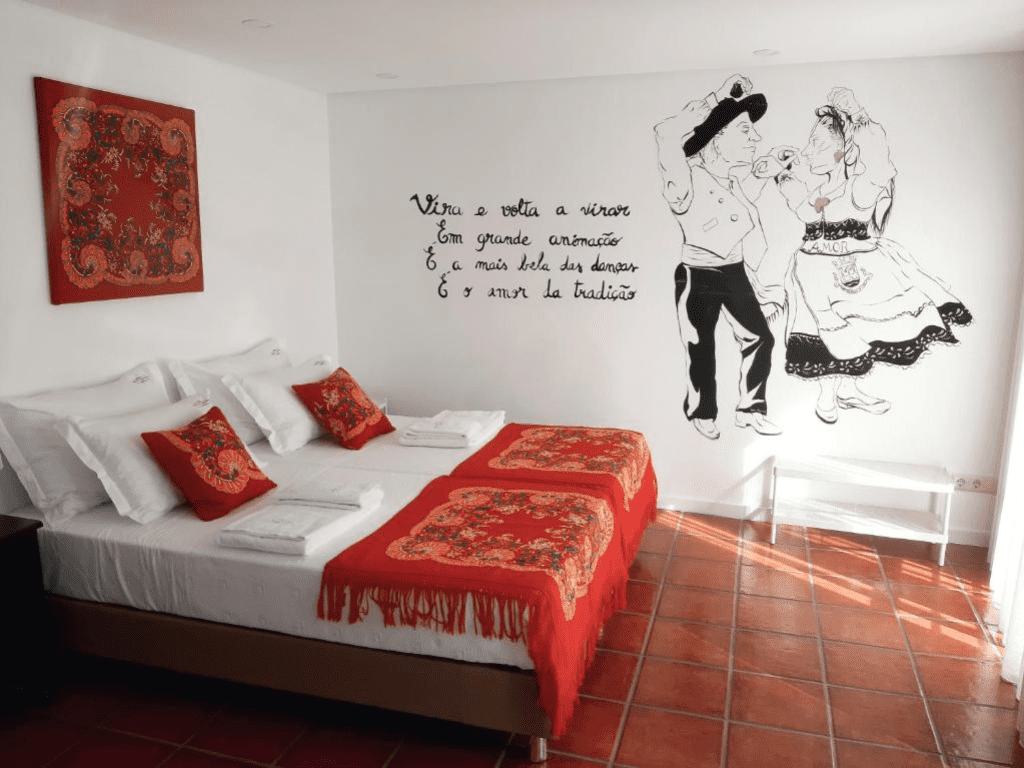
Although most pilgrims will refer to any type of accommodation as an albergue, there are non-hostel options as well for those who don’t wish to share a room.
In particular you’ll find:
- Pensiónes — Small guesthouses
- Casas rurales — Country houses or farm homes
- Hotels — There are a number of hotels, especially in the larger cities
Depending on the location, these accommodations can range in style and price from around $32 (€30) to $53 (€50) or more. If you’re set on private accommodation, choose whatever is available at each stop, rather than set yourself on “all hotels” for instance, as not every hamlet has a hotel!
Frequently Asked Questions About Albergues
What is the difference between hostel and albergue?
When it comes to walking the Camino de Santiago, albergues are hostels that are reserved for pilgrims only.
What are the beds like on the Camino de Santiago?
The beds available on the Camino will vary depending on where you stay. In the public hostels, you can find large rooms with 30 or 40 beds inside! In the private albergues, you will often find smaller rooms with 8-20 beds. Small pensions and hotels may offer single rooms (full/double or twin mattress), twin rooms, triple rooms, or even family rooms (4-5 beds).
Do albergues have blankets?
It depends on the albergues. During the colder months, many albergues will have blankets on the beds.
Should I pre-book my albergues?
We do not recommend that you pre-book your entire Way. There is just simply no way to know how far you’ll want to walk each day, if you’ll need to do laundry, where to eat, etc.
Instead, we recommend you show up, or book about 1 day in advance. In other words, when you sit down for dinner, plan the next day’s route and make your booking.
Again, you usually can’t pre-book public albergues. So if your plan includes municipales, you will not have the option to pre-book.
The Camino will provide.
Are albergues open all year round?
There is a Camino season as the winter months become too frigid to walk on some of the more mountainous routes. Albergues begin opening in March and remain open through the end of October. Some of them open a bit later, in April. It depends on when Easter falls, the weather, and the individual facility. (Holy Week and Easter are a time when the Camino is busier — read more about when to go on the Camino.)
As always, there are a few exceptions. For example, on the Northern Way, some albergues are only open during the peak of the season from July to September.
During the winter, most albergues will be closed, but if you plan carefully, walking a winter Camino and finding a place to sleep at a private albergue or hotel is possible.
Are there separate showers for men and women in the Camino albergues?
Typically there are separate showers for men and women along the Camino de Santiago. They have shower stalls that you can close. Some hostels have one unisex bathroom that everyone uses (one toilet and one shower stall). Even rarer on some of the less popular routes, there may be group shower rooms without stalls. Again, these are usually separated by gender or can be used at different times.
Should I bring a sleeping pad on the Camino?
No, you do not need a sleeping pad. In fact, camping in non-designated areas is illegal in Spain. This is not a wilderness trek like the Pacific Coast Trail or Appalachian Trail; there are small villages every few miles with accommodation to fit any budget. Leave your camping gear at home, and stay at one of the many available albergues or hotels, and enjoy the pilgrim camaraderie.
Do I need a sleeping bag for the Camino?
As for a sleeping bag, you likely do not need one if you’re traveling late spring-early fall. Typically, a sleeping bag liner will suffice. I used this one in June and July, and it was comfortable, breathable, and lightweight. Some albergues will also provide blankets. If you’re traveling in the early spring, late fall, or winter, consider bringing an ultralight sleeping bag or camp blanket.
What is a hospitalero?
Hospitaleros are the hosts at each albergue and are a large part of the Camino journey. Without them, hundreds of thousands of pilgrims wouldn’t be able to walk the trail each year. The hospitaleros, many of which are unpaid volunteers, work hard to ensure each and every pilgrim has a place of refuge for the night.
Do the albergue hospileros speak English?
Most hospitaleros speak a little English, enough to clarify which bed is yours, which is all you really need! There are often signs posted with directions (light’s out, check-out time, etc.) as well. Some of the association and parochial albergues are staffed by volunteers from all over the world, as well so they likely speak English.
We do recommend you brush up on your basic Spanish, though, as knowing a few words can go a long way. An app like Babbel is great for getting in some practice on the plane!
Are there bedbugs on the Camino?
Another negative of accommodations on the Camino in general are bedbugs. If you’re wondering if there are bedbugs on the Camino, there unfortunately are sometimes. However, bed bugs can live anywhere from hostels to 5-star hotels, so the problem doesn’t have anything to do with the albergues themselves. I’ve been to over 34 countries, and in my personal experience, I encountered them once at a pensión on the Camino Frances where I booked a private room.
To avoid bed bugs, many pilgrims (plus hikers and travelers as well) recommend spraying down your gear before traveling with Permethrin. This spray repels insects and can last for up to six weeks. You should also check your mattresses each day for signs of an infestation. Lastly, never ever put your pack on the bed. Leave your backpack on hard surfaces only (floor, chair, hanging from a hook, locker, etc.)
If you do get bitten, don’t panic. A thorough wash and heated dry of all your gear and some anti-itch cream is likely all you’ll need.
Final Thoughts on Camino de Santiago Albergues
If you’re hesitant at all to stay at an albergue, don’t be! While some of them are just a place to hang your hat, others will become a cherished part of your Camino experience.
One thing is for sure — the communal aspect in the Camino alberuges (and other Camino accommodation) is something you don’t want to miss. There’s an indescribable buzz around the place (perhaps the “Spirit of the Camino”) as pilgrims come and go, swap stories, dine together, and fall asleep side-by-side.
So embrace the experience, and let us know which are your favorite albergues in the comments section!
Camino de Santiago Travel Guide
🏨 Where should I book accommodations for the Camino?
Search Booking.com hotels, hostels, B&Bs, and guesthouses on the Camino.
🚉 How do I buy train or bus tickets in Spain?
Search for train tickets in Spain on Omio which will show you the best selection of trains and buses. Trainline and Busbud are also great to cross-reference, as no one platform has every route!
📱 Where can I get cellular data for Santiago de Compostela?
Try using Airalo, the world’s first eSIM store! Download, and install your eSIM, and get connected as soon as you land.
📃 Should I buy travel insurance for the Camino de Santiago?
Yes! Protect your investment from trip interruptions to unexpected injuries — compare rates on Travel Insurance Master and SafetyWing (which has some of the cheapest rates when you subscribe to a 1+ Month plan).
🎒 How can I book backpack transport on the Camino?
To arrange for backpack transfer on the Camino, check with Jacotrans or Pilbeo.
✈ What are the best sites to book flights within Spain?
Search Skyscanner for best flights that other search engines miss!
🏙 Where do I find the best Santiago de Compostela tours?
Search for top-rated Santiago de Compostela tours or day trips (with reviews!) on Viator and/or Get Your Guide.
🥾 What should I pack for the Camino de Santiago?
Download the Camino de Santiago packing list.
Go to our resources page for more booking tools we use to plan our trips.
Camino planning resources
You may be interested in these articles on the Camino de Santiago.
- Cost of Walking the Camino de Santiago
- What is Food Like on the Camino de Santiago?
- Ultimate Guide to the Camino de Santiago
- Top Hotels in Santiago de Compostela
- Best Hostels in Santiago de Compostela, Spain
- Camino de Santiago Packing List
Pin it!
